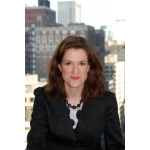Relationship Management
Minimalistic Major Gift Portfolios: Do Your Prospects Spark Joy?
By David Lively and Erin Lynch Moran | November 04, 2021

Editor's Note: This article is featured in Best of Connections 2021. Read Apra Editorial Advisory Committee Chair Jessica Balsam's editor's message to learn more about the top articles of the year.
By: David Lively and Erin Lynch Moran
Minimalism is on the rise. Entire social media accounts, YouTube channels, blogs and books are devoted to helping people achieve a minimalist lifestyle. In the United States, Marie Kondo became a minimalist icon when the English translation of “The Life-Changing Magic of Tidying Up” was published in 2014. Since then, her work has garnered both devotees and skeptics, each with strong feelings about her trademark KonMari method.
If you are unfamiliar with the KonMari method, it involves organizing your belongings by type, holding each artifact in your hands and asking, “Does this spark joy?” It’s the concept of sparking joy that generates most of the skepticism for the method. To be fair, it’s difficult to imagine having a cheese grater that sparks joy, and yet we sometimes need to grate cheese.
We think the KonMari method could be reframed by asking an inverse question: “Does this spark stress?” Items that “spark stress” might include that pair of jeans that no longer fits but stays in the closet to shame you. The KonMari method makes the argument that your life would be less stressful and more efficient if you only kept the clothing that fits the body you have now.
Far too many organizations have major gift portfolios that would benefit from the KonMari method. In their development offices, fundraisers are assigned to the prospects they plan to solicit this year, the ones they plan to solicit soon, the ones they think they might solicit someday, the ones they haven’t met but look great on paper and the ones they haven’t contacted in years but want to “call dibs” on. These bogged down portfolios, much like an overstuffed closet, make it challenging for fundraisers to focus on the prospects that require their attention now. And like a messy closet, they often contain items that are of no practical use to the fundraiser but, if donated, might be prized by one of their colleagues.
Make no mistake: large portfolios may be the primary barrier to meeting your development office’s goals. To understand why, consider what would happen if a fundraiser carrying a portfolio of 150 major gift prospects had to winnow the list down to no more than 40:
- The fundraiser would need to carefully prioritize their prospects, selecting those with the highest major gift capacity and likelihood, removing any they think won’t be ready to give in the next 36 months or fewer.
- The fundraiser would then have to relinquish their assignments to the previously ignored prospects in their portfolio, many of whom still have high capacity and likelihood.
- Other fundraisers would be free to engage these formerly unavailable prospects, collectively improving the opportunities available to the entire team.
- Each fundraiser would be motivated to continually evaluate their portfolio to ensure they were assigned to the very best prospects available.
- Ultimately, all major gift portfolios would be optimized, giving major gift officers opportunities to make larger and more thoughtful asks.
- As a result, the collective portfolio for the entire organization would be prioritized for maximum productivity.
If a portfolio with 40 prospects sounds improbably small, consider how you may be defining a major gift. While most organizations define it according to a dollar threshold, the true definition is more nuanced. Major gift donors are inspired to make a transformational impact on an organization and those it serves. Often the gift is large enough to originate from the donor’s assets rather than just their income. Preparing someone to make a gift of that magnitude requires significant time and planning.
Now consider the time a development officer has to make such strategic, thoughtful solicitations. Removing weekends and vacation days, the average development officer in the U.S. might work 220 days per year (in other countries, even fewer). If that fundraiser works effectively, they may be able to make a major gift solicitation every 15-22 days. This means they can only make about 10-15 solicitations per year, which is roughly a quarter to a third of their 40-prospect portfolio.
Assigning more than 40 prospects to someone who can only make 10-15 solicitations every year takes good prospects “out of play” when they might be actively managed by someone else. In short, it leaves money on the table. Further, it often taxes prospect research teams that are constantly asked to find more prospects when access to previously assigned and ignored prospects may be all that is needed.
If your leadership is hesitant to experiment with small portfolios, perhaps they might be open to conducting a test with a cohort of development officers. Northwestern University tested small portfolios in combination with fundraising metrics that focused on closing major gifts. The test group included 20 fundraisers who had been in their jobs for more than a year.
The results? Compared to their activity two years prior, their solicitation rate increased by 170%, the number of major gifts they raised grew by 211% and the dollars they raised increased by 595%. In short, they were able to narrow their focus to the very best prospects and shepherd them through the process of making extraordinary gifts. This increased both productivity and morale.
The next time you review a major gift portfolio, ask yourself whether the prospects spark joy by being capable, likely and somewhat ready to make a high-impact gift. You will find that your development team is more focused, less stressed and making a bigger impact than you might have imagined.


David Lively
Associate Vice President of Alumni Relations and Development, Northwestern University
With more than 27 years of experience in higher education advancement, David Lively has directed successful development strategies across five comprehensive fundraising campaigns. Most recently, Lively served as Campaign Manager of We Will. The Campaign for Northwestern, which generated more than $6 billion for Northwestern. In addition to his campaign role, Lively oversees Northwestern’s principal and international gifts, regional and major gifts, and planned giving units.
Prior to joining Northwestern in January 2012, Lively served as vice president of development at DePaul University. During his nine-year tenure at DePaul, Lively held several positions, including senior director of development at the Driehaus College of Business. Before moving to DePaul, he worked as director of annual giving and director of law development at the University of Denver.
Lively previously worked at Northwestern in the late 1990s, serving as associate director of development at Northwestern Pritzker School of Law during the University’s prior campaign. He began his development career in 1994 at the University of Colorado Foundation, Inc. as the assistant phoneathon director in the office of annual giving.

Erin Lynch Moran
The Solas Group
Erin has more than 20 years of experience serving fundraising professionals. She began her career in prospect research, and has gone on to oversee areas as diverse as advancement services, operations, donor relations, communications, alumni relations, and annual giving. For eight years, Erin was the campaign director for DePaul University’s largest and most successful fundraising effort, the Many Dreams, One Mission campaign. Having also served as an interim VP for Advancement (a role to which she did not aspire!), Erin has a unique understanding of the pressures faced by campus leaders.
Erin holds a BA in theatre with honors from Grinnell College and an MA in English with distinction from DePaul University. She is a graduate of Harvard University’s Management Development Program within the Graduate School of Education. Erin has spoken on advancement services and campaign-related topics at many APRA and CASE conferences, and she has repeatedly been a guest lecturer for graduate courses in fundraising, teaching on topics such as prospect identification, campaign planning, and donor motivation.